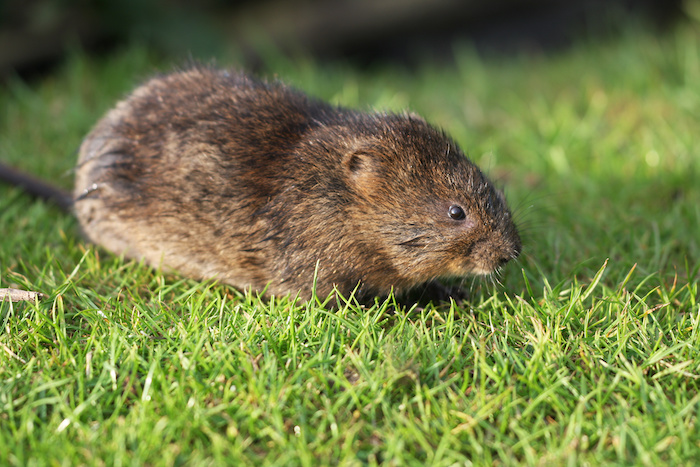How to Get rid of voles

What are voles?
Voles, often called field or meadow mice, are prevalent throughout the entirety of California and most of the United States. Of the six species that exist in the U.S. there are two that are responsible for the most damage in California.
The California vole, M. Californicus, is the most common in all areas of California. They can be found in the Owens and Central valleys as well as almost the entire length of the coastal range. M. montanus, or the Montane Vole, are typically found in northeastern California and the eastern Sierra slope.
These tiny creatures often resemble mice but they are actually more closely related to lemmings and hamsters than to mice or rats.
Voles are between 3-9 inches in length depending on the species. The females can have five to ten litters per year! Though the average lifespan of a healthy Vole is three months, with only one month to reach adulthood. Due to the exponential growth of these creatures, Vole populations can grow in a shockingly short time. A pair of Vole mates can produce more than a hundred Voles in a year.
Vole Damage
What do voles eat?
A varying diet means voles can damage many plant species:
Artichoke
Beets
Brussels sprouts
Cabbage
Carrots
Cauliflower
Celery
A Vole’s diet consists mainly of small plants. Though like their close cousins, the shrew, they will eat dead animals as well. Much like mice and rats, Voles can also survive on almost any fruit or nut.
A large colony of Vole’s can mean doom for a garden or crop if left unchecked.
Call a professional now!
Vole Damage to trees
Vole Damage to trees is caused when voles gnaw at the bark of the trees, this is called girdling. Trees with girdling damage show signs of stress such as early season leaf defoliation, dying branches and splitting bark. Sometimes girdling occurs on the roots of the trees or just below the soil surface. You will have to dig down to check for girdling damage if the signs are present. If girdling is not caught early and dealt with this can cause the trees system of spreading nutrients to be compromised eventually killing the tree completely.
how to get rid of voles naturally
Voles love to hide. Weeds, heavy mulch, and dense foliage cover gives Voles the perfect cover they need to travel from food source to their burrows. Voles do not like to feed in the open, therefore regularly mowing, removing weeds, tilling tall grass areas along ditches and field/grass edges near gardens or crops is a cheap and effective way to deter Voles.
You can also protect young trees from girdling by surrounding the bottom portion of the trunk with plastic cylinders, sheet metal or hardware cloth.
Trapping can be an extremely effective solution if the Vole population has not grown to an unmanageable size. The key is making sure to use enough traps in accordance with the size of the infested area. Small gardens may only need 10 to 12 traps whereas larger areas may need 50 or more. You can use simple mouse traps if you are going to attempt to trap them yourselves. You rarely need to bait them because they follow the same visible paths and will not stray. This habit nearly guarantees that they will trigger the trap.
Though it is possible to handle smaller populations yourself, it is always recommended to consult with a professional as disposing of any pests can pose health risks if not handled properly.
If a Vole population has grown too large, the use of toxic baits would be the most effective solution. Anti-coagulants are probably the safest type of rodent bait to use around homes and gardens. These types of toxins are slow acting and must be consumed over the course of 5 days. They also have an effective antidote, Vitamin K1, making it safe to use around children and pets.
How to Effortlessly Trap Summer Gophers in the Bay Area
Gophers Don’t Take a Summer Break Because the Bay Area’s weather stays mild, gophers remain busy underground even in summer. Moreover, dry soil pushes them
Smells That Attract Raccoons…And How To Avoid Them
If you have raccoons on your property call Got Gophers now! Raccoons are intelligent and resourceful creatures that can be drawn to certain smells in
Safeguard Your Sanctuary: Expert Strategies for Removing Raccoons with Precision
Understanding the Need for Removing Raccoons Raccoons can be dangerous! Do not risk disease or physical injury, call our trained professionals now! Removing raccoons from
Effective Methods for Trapping Moles
Trapping moles can get messy, contact Got Gophers and let us handle the rest. Moles can wreak havoc on your garden, leaving behind a trail
